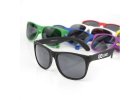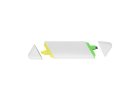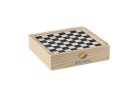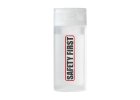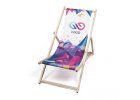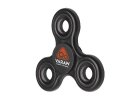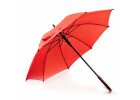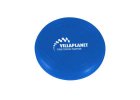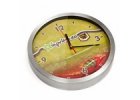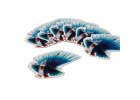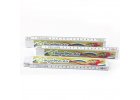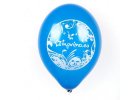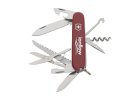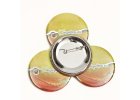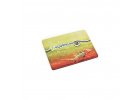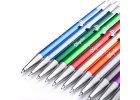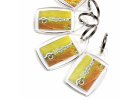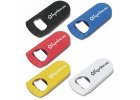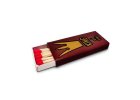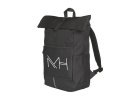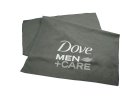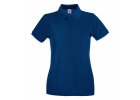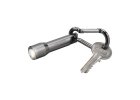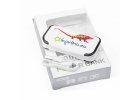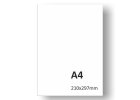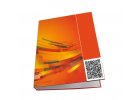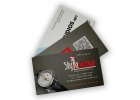PPE
Government Regulation No. 21/2003 Coll., which sets technical requirements for personal protective equipment
GOVERNMENT REGULATION
No. 21/2003 Coll.,
which sets technical requirements for personal protective equipment
The Government orders according to § 22 of Act No. 22/1997 Coll., on Technical Requirements for Products and on the Amendment and Supplementation of Certain Acts, as amended by Act No. 71/2000 Coll. and Act No. 205/2002 Coll., (hereinafter referred to as the "Act") for the implementation of § 11a (2) (c), § 11 (2), § 12 (1) and (3), and § 13 (2) of the Act:
Basic Provisions
(1) This regulation sets technical requirements for personal protective equipment in accordance with the law of the European Communities1).
(2) For the purposes of this regulation, a personal protective equipment is considered to be any device or equipment intended to be worn or held by an individual to protect against one or more health and safety risks. Personal protective equipment also includes
| a) | technical assembly consisting of several devices or equipment permanently connected by the manufacturer, for protecting the individual against one or more potentially simultaneous risks, |
| b) | protective device or equipment that is separably or inseparably connected with personal gear without a protective effect, worn or held by an individual during a specific activity, |
| c) | removable component of a personal protective equipment that is essential for its proper functioning and is used exclusively for that equipment. |
(3) Any system marketed together with personal protective equipment, intended for connection to another external supplementary device, is considered an integral part of that equipment, even if the system is not intended for permanent wearing or holding by the user throughout the period of exposure to risk.
(4) For the purposes of this regulation, personal protective equipment does not include
| b) | personal protective equipment listed in Annex 1 to this regulation, regardless of whether they are excluded under letter a). |
(5) The defined products under this regulation are personal protective equipment within the meaning of § 12 (1) (a) of the Act.
Conditions for Placing Personal Protective Equipment on the Market and Putting It into Service
(1) Personal protective equipment must meet the basic safety and health protection requirements set out in Annex 2 to this regulation (hereinafter referred to as the "basic requirements") and may only be placed on the market and put into service if, when properly maintained and used for the intended purpose, it protects health and ensures the safety of users, without endangering the health and safety of other persons, domestic and farm animals, or property.
(2) The basic requirements are considered to be met if the personal protective equipment complies with a harmonized Czech technical standard, or a foreign technical standard adopted in the Member States of the European Union that takes over a harmonized European standard (§ 4a of the Act).
(3) Personal protective equipment that does not meet the requirements of this regulation may be demonstrated or displayed at fairs, exhibitions, etc., only if a visible notice alerts to this fact and the prohibition of its provision or use for any purpose, until the personal protective equipment is brought into compliance with this regulation by the manufacturer or its authorized representative.
Conformity Assessment Procedures
(1) Before placing personal protective equipment on the market, the manufacturer or its authorized representative shall compile technical documentation to the extent specified in Annex 3 to this regulation, so that it can be presented to the supervisory authorities if necessary, and ensures CE type examination according to § 4, with the exception of personal protective equipment listed in paragraph 2, and proceeds further according to § 7.
(2) For personal protective equipment of simple construction, designed such that the user can assess the level of protection against individual progressively acting minimal risks, which can be recognized timely and safely by the user, CE type examination is not required. This category exclusively includes personal protective equipment designed to protect the user against
| a) | mechanical effects whose impacts are surface-level (e.g., gardening gloves, thimbles), |
| b) | mildly aggressive cleaning agents whose effects can be easily eliminated (e.g., protective gloves against diluted cleaning solutions), |
| c) | risks associated with handling hot objects that do not expose the user to temperatures exceeding 50°C or dangerous impacts (e.g., gloves, aprons for professional use), |
| d) | climatic influences that are neither extraordinary nor extreme (e.g., headwear, seasonal clothing, footwear), |
| f) | sunlight (sunglasses). |
(3) For complex personal protective equipment intended to protect against fatal hazards or hazards that can seriously and irreversibly damage health, and where the design is based on the fact that the user cannot timely recognize its immediate effects, the manufacturer shall, in addition to the procedure specified in paragraph 1, choose to control the manufactured personal protective equipment either according to § 5 or § 6. This category exclusively includes
| a) | filtering devices for respiratory protection against solid and liquid aerosols or against irritating, dangerous, toxic, or radioactive gases, |
| b) | devices for respiratory protection providing complete isolation from the surrounding atmosphere, including diving equipment, |
| c) | personal protective equipment providing only limited protection against chemical effects or ionizing radiation, |
| e) | protective equipment for use in cold environments, with effects comparable to air at temperatures of -50°C or lower, |
| f) | personal protective equipment protecting against falls from heights, |
| g) | personal protective equipment against risks caused by electricity and dangerous voltage or equipment used as insulation when working under high voltage. |
(4) Documents of conformity assessment (§ 13 (7) of the Act), which the manufacturer or its authorized representative keeps, include a set of technical documentation, the CE Declaration of Conformity, and the CE type examination certificate.
CE Type Examination
(1) CE type examination is a procedure whereby a notified body2) determines and certifies the conformity of personal protective equipment with the requirements of this regulation.
(2) The application for CE type examination is submitted by the manufacturer or its authorized representative to one of the notified bodies selected with regard to the type of personal protective equipment to be assessed. The application must include an adequate number of product samples. The application must contain
| b) | the set of technical documentation provided by the manufacturer, as specified in Annex 3 to this regulation. |
(3) The notified body during CE type examination
| a) | reviews the set of technical documentation provided by the manufacturer to determine its suitability in relation to the technical standards according to § 2 (2). If the manufacturer has not used the technical standards according to § 2 (2), or has used them only partially, or if such standards do not exist, the notified body must review the suitability of the technical specifications used by the manufacturer to determine their compliance with the basic requirements, before reviewing the set of technical documentation provided by the manufacturer, | |
| b) | examines a sample of the product so that | |
| 2. | conducts the necessary assessments and tests to determine compliance of the product sample with the technical standards referred to in § 2(2), and |
| 3. | if the manufacturer has not used or has only partially used the technical standards referred to in § 2(2) or if such standards do not exist, the notified body shall carry out the necessary assessments and tests to determine the compliance of the product with the technical specifications used by the manufacturer, and the compliance of the product with the basic requirements. |
(4) If the product sample meets the basic requirements, the notified body shall issue to the applicant an EC type-examination certificate (hereinafter referred to as "certificate"). The certificate includes the findings of the examination, the conditions associated with its issuance, descriptions, and representations of the certified personal protective equipment necessary for its identification.
(5) The Office for Technical Normalization, Metrology and State Testing (hereinafter referred to as the "Office"), the Commission of the European Communities (hereinafter referred to as the "Commission"), other notified bodies, and the competent authorities of the member states of the European Union may, upon request, obtain a copy of the certificate and, upon justified request, a copy of the technical documentation provided by the manufacturer and a copy of the report on the assessments and tests conducted.
(6) If a notified body refuses to issue a certificate, it shall inform the Office and the relevant notified bodies. If a notified body cancels a certificate, it shall inform the Office and the competent authorities of the member state of the European Union where the certificate was issued.
EC Quality Assurance System for the Product
(1) The EC quality assurance system for the product is a procedure whereby
| b) | the notified body chosen by the manufacturer performs the necessary checks of personal protective equipment randomly at intervals of less than one year. |
(2) The sample of personal protective equipment taken by the notified body shall be subjected to the findings and tests specified in the technical standards referred to in § 2(2) or necessary to demonstrate compliance of the product with the basic requirements.
(3) If the manufacturer has chosen a notified body other than the one that issued the relevant certificate for the checks according to point (b) of paragraph 1, the chosen notified body shall, in case of difficulties in assessing the compliance of the sample, cooperate with the notified body that issued the certificate.
(4) The notified body shall provide the manufacturer with a test report. If the report concludes that production is not consistent, that the checked personal protective equipment does not comply with the type described in the certificate, or that it does not meet the basic requirements, the notified body shall take measures appropriate to the seriousness of the detected faults and inform the Office.
(5) The manufacturer shall, upon request, submit the test report from the notified body to the supervisory authorities.
EC Production Quality Assurance System with Supervision
(1) The EC production quality assurance system is a procedure whereby the notified body approves the manufacturer's quality management system and, through supervision according to paragraph 6, ensures that the manufacturer adheres to the commitments arising from the approved quality management system.
(2) The manufacturer submits an application to the notified body of its choice for the approval of the quality management system. The application must include
| a) | all information related to the relevant category of personal protective equipment, including, if applicable, documentation related to the certified sample, |
| b) | documentation on the quality management system and |
| c) | the manufacturer's commitment to fulfill the obligations arising from the quality management system and to maintain it to ensure it remains adequate and effective. |
(3) Within the quality management system, the manufacturer shall subject each personal protective equipment to an assessment according to § 5(2) to determine its compliance with the relevant basic requirements. The quality management system documentation must include, in particular, a description of
| a) | quality objectives, organizational structure, scope of responsibilities of the management and their powers and responsibilities concerning product quality, |
| b) | controls and tests that must be carried out after production, and |
| c) | means to monitor the effective functioning of the quality management system. |
| a) | assesses the quality management system to determine whether it meets the requirements of paragraph 3; for quality systems that use the relevant standard, conformity with these provisions is assumed, |
| c) | notifies the manufacturer of the decision including the results of the inspection with reasoning. |
(5) The manufacturer informs the notified body that approved the quality management system of all planned changes to this system. The notified body reviews the proposed changes and decides whether the modified quality management system complies with the relevant provisions. It notifies the manufacturer of its decision. The notification includes the findings of the review and the reasoned decision on the assessment.
(6) Supervision of the quality management system operated by the manufacturer is a procedure aimed at ensuring that the manufacturer properly fulfills the obligations arising from the approved quality management system. As part of this procedure
| a) | the manufacturer allows the notified body access to the areas intended for inspection, testing, and storage of personal protective equipment and provides all requested information, including | |
| 1. | quality management system documentation, |
| 2. | technical documentation, and |
| 3. | quality management manuals, |
| b) | the notified body conducts regular audits to ensure that the manufacturer maintains and uses the approved quality management system; a copy of the audit report is provided to the manufacturer, | |
| d) | the manufacturer must submit the notified body's reports to the supervisory authorities upon request. | |
EC Declaration of Conformity
The EC Declaration of Conformity is part of the conformity assessment procedure in which the manufacturer or their authorized representative
| a) | prepares a declaration for submission to the competent authorities using the form specified in Annex IV to this regulation, certifying that the personal protective equipment placed on the market complies with the requirements of this regulation, |
| b) | marks each personal protective equipment with the CE marking according to § 8. |
CE Marking and Other Marking
(1) The CE marking, whose graphic form is defined by specific legislation,3) must be affixed to each piece of personal protective equipment so that the marking is visible, legible, and indelible for the entire expected lifespan of the personal protective equipment. However, if this is not possible due to the characteristics of the product, the CE marking may be affixed to the packaging. The individual components of the CE marking must generally have the same height, which must not be less than 5 mm; for small personal protective equipment, these minimum dimensions do not need to be adhered to. The personal protective equipment must not be marked with any marking that could mislead anyone with regard to the CE marking.
(2) In the case of involvement of a notified body in the manufacturing process, as specified in § 5 and 6, its identification number must be included.
(3) The personal protective equipment or its packaging may bear any additional marking provided that it does not reduce the visibility and legibility of the CE marking.
(4) The CE marking on personal protective equipment indicates that the product meets the technical requirements established in all legislation applicable to it that either establishes or allows this marking, and that the prescribed procedure for assessing its conformity has been followed. However, if one or several pieces of legislation temporarily allow the manufacturer to choose which provisions to follow, then the CE marking indicates conformity only with the legislation or provisions that the manufacturer has used. In this case, the documentation, warnings, or instructions required by the relevant legislation and provided with the products must specify the relevant European Community legislation or provisions that the manufacturer has used.
Notification of Protective Measures
If protective measures have been imposed on personal protective equipment under specific legislation,4) the notification of the decision to impose protective measures under § 7(8) of the Act must indicate whether the non-compliance was due to
| a) | failure to meet the essential requirements under § 2(1), |
| b) | incorrect application of technical standards according to § 2(2), or |
| c) | deficiencies in the technical standards listed in § 2(2). |
Authorization Conditions
(1) In the authorization of legal entities under § 11(2) of the Act, the conditions set out in Annex No. 5 to this Regulation shall apply. Legal entities that meet the criteria set out in the relevant harmonized technical standards are considered to comply with the relevant conditions.
(2) An authorized body becomes a notified body following the procedure under § 11(7) of the Act.
Transitional and Final Provisions
§ 11
(1) Valid certificates or other documents issued under Government Regulation No. 172/1997 Coll., as amended by Government Regulation No. 284/2000 Coll., may be used for the purposes of conformity assessment under this Regulation, unless revoked under the conditions specified by law.
(2) Persons authorized to perform activities related to conformity assessment under Government Regulation No. 172/1997 Coll., as amended by Government Regulation No. 284/2000 Coll., are considered authorized to perform activities under this Regulation.
It is repealed:
| 1. | Government Regulation No. 172/1997 Coll., establishing technical requirements for personal protective equipment. |
| 2. | Government Regulation No. 284/2000 Coll., amending the government regulation establishing technical requirements for personal protective equipment. |
Effectiveness
This Regulation shall enter into force on the date of the entry into force of the Treaty of Accession of the Czech Republic to the European Union.
(editor's note: i.e., from May 1, 2004)
COMPLETE LIST OF TYPES OF PERSONAL PROTECTIVE EQUIPMENT TO WHICH THIS REGULATION DOES NOT APPLY
This Regulation does not apply to the following types of protective equipment:
1. Personal protective equipment designed and manufactured specifically for armed forces or for public order enforcement purposes (helmets, shields, etc.).
2. Personal protective equipment for self-defense (aerosol sprays, personal deterrent devices, etc.).
3. Personal protective equipment designed and manufactured for private use against
| a) | unfavorable climatic conditions (headgear, seasonal clothing, footwear, umbrellas, etc.), |
| b) | moisture and water (dishwashing gloves, etc.), |
| c) | heat (gloves, etc.). |
4. Personal protective equipment that is not worn continuously, intended for the protection or rescue of persons on vessels or aircraft.
5. Helmets and visors intended for users of single-track or two-track motor vehicles.
BASIC REQUIREMENTS FOR SAFETY AND HEALTH PROTECTION
1. GENERAL REQUIREMENTS FOR ALL PERSONAL PROTECTIVE EQUIPMENT
Personal protective equipment must provide adequate protection against all hazards.
1.1 Design Principles
1.1.1 Ergonomics
Personal protective equipment must be designed and manufactured so that the user can normally perform the activity exposing them to risk under the expected conditions of use, while utilizing the highest possible level of protection.
1.1.2 Protection Levels and Classes
1.1.2.1 Highest Level of Possible Protection
The optimal level of protection is considered to be the level at which any restrictions caused by the use of personal protective equipment would prevent its effective use during the period of exposure to risk or during the normal performance of the activity.
1.1.2.2 Protection Classes Corresponding to Different Levels of Risk
If the expected conditions of use differ so that multiple levels of the same risk can be distinguished, the relevant protection classes must be considered in the design of the personal protective equipment.
1.2 Safety of Personal Protective Equipment
1.2.1 Hazardous and Other Limiting Characteristics
Personal protective equipment must be designed and manufactured to exclude hazardous and disruptive characteristics under the expected conditions of use.
1.2.1.1 Suitability of Materials Used
The materials used in the personal protective equipment, including the products of their degradation, must not adversely affect the hygiene or health of the user.
1.2.1.2 Suitability of Surfaces of All Components of the Personal Protective Equipment in Direct Contact with the User
Any component of the personal protective equipment that comes into contact or potential contact with the user during use must be free from imperfections, sharp edges, protrusions, etc., that could cause excessive irritation or injury.
1.2.1.3 Maximum Acceptable Restrictions for the User
Movements performed, postures assumed, and sensory perceptions may only be restricted by the personal protective equipment to the minimum necessary extent. The use of personal protective equipment must not lead to movements that would endanger the user or others.
1.3 Comfort and Effectiveness
1.3.1 Adapting Personal Protective Equipment to the User’s Body
The personal protective equipment must be designed and manufactured to facilitate the user’s fitting into the correct position and maintaining that position for the expected period of use, considering the surrounding influences, movements performed, and postures assumed. For this purpose, the personal protective equipment must be adjustable to the user’s body using all suitable means, such as appropriate adjustment and fastening systems or ensuring a sufficient range of sizes.
1.3.2 Weight and Structural Strength
The personal protective equipment must be as lightweight as possible while maintaining structural strength and effectiveness.
In addition to specific additional requirements that the personal protective equipment must meet according to point 3 to provide adequate protection against the relevant risk, it must also be able to withstand environmental conditions under the expected conditions of use.
1.3.3 Compatibility of Different Personal Protective Equipment Intended for Simultaneous Use
If the same manufacturer markets several models of personal protective equipment of different types or kinds to provide simultaneous protection for adjacent parts of the body against combined risks, these models must be compatible.
1.4 Information Provided by the Manufacturer
When placing personal protective equipment on the market, the manufacturer must provide instructions containing, in addition to the identifying details of the manufacturer or their authorized representative, all important information on
| a) | Storage, use, cleaning, maintenance, adjustment, and disinfection. Cleaning, maintenance, and disinfection agents recommended by the manufacturer must not have any adverse effects on the personal protective equipment or the user if used in accordance with the relevant instructions; |
| b) | The effectiveness of the personal protective equipment as determined during technical tests for checking protection levels or classes; |
| c) | Suitable accessories for the personal protective equipment and characteristics of the relevant spare parts; |
| d) | Protection classes corresponding to different levels of risk and the resulting limits of use; |
| e) | The end of the life span or the life span of the personal protective equipment or its specific components; |
| f) | Type of packaging suitable for transportation; |
| g) | The significance of all markings (see point 2.12); |
| h) | Legal regulations if used in accordance with § 8(4); |
| i) | Identification details of the notified body (name or trade name and address) that participated in the design phase of the personal protective equipment and its identification number. |
These instructions must be precise and understandable and must be provided at least in the language of the Member State of the European Union to which the personal protective equipment is intended.
2. ADDITIONAL REQUIREMENTS COMMON TO MULTIPLE TYPES OR CATEGORIES OF PERSONAL PROTECTIVE EQUIPMENT
2.1 Personal protective equipment with adjustment systems
If the personal protective equipment is equipped with adjustment systems, these systems must be designed and manufactured so that there is no improper adjustment without the user's knowledge under the expected conditions of use.
2.2 Personal protective equipment "enveloping" protected parts of the body
If possible, the personal protective equipment "enveloping" the protected parts of the body must be adequately ventilated to minimize sweating during use; if not, it must be equipped with means to absorb sweat.
2.3 Personal protective equipment for face, eyes, and respiratory organs
Any restriction of the user's field of vision or visibility caused by personal protective equipment for the face, eyes, or respiratory organs must be minimized.
The degree of optical neutrality of such personal protective equipment must be compatible with the corresponding type of more or less precise or long-term activities of the user.
If necessary, the personal protective equipment must be adjusted or equipped with accessories to prevent moisture formation.
Personal protective equipment intended for users with vision correction must allow for the wearing of glasses or contact lenses.
2.4 Personal protective equipment subject to aging
If it is known that the proposed parameters of the new personal protective equipment may be significantly affected by aging, the production date or, if possible, the use-by date must be indelibly marked on each piece of personal protective equipment or replaceable component put on the market in such a way that no misinterpretation is possible; this information must also be indelibly marked on the packaging.
If the manufacturer cannot guarantee the life span of the personal protective equipment, their instructions must provide all necessary information allowing the customer or user to clearly determine the use-by date, taking into account the product quality level and the actual conditions of storage, use, cleaning, adjustment, and maintenance.
If there is a likelihood of noticeable and rapid degradation of the effectiveness of the personal protective equipment due to aging resulting from a regularly repeated cleaning procedure recommended by the manufacturer, the manufacturer should, if possible, place a marking on each personal protective equipment put on the market indicating the maximum number of cleaning operations after which inspection or removal of the personal protective equipment is required; if marking on the product is not possible, the manufacturer must provide this information in the instructions.
2.5 Personal protective equipment that can be caught during use
Where the expected conditions of use include, in particular, the risk of the personal protective equipment being caught by a moving object, thus creating a hazard to the user, the personal protective equipment must have an appropriate breaking strength, beyond which the component will break and thereby eliminate the hazard.
2.6 Personal protective equipment for use in explosive environments
Personal protective equipment intended for use in explosive environments must be designed and manufactured in such a way that it cannot become a source of electrical, electrostatic, or impact-induced arcs or sparks that could ignite an explosive mixture.
2.7 Personal protective equipment intended for emergency use or quick donning or doffing
Personal protective equipment of this kind must be designed and manufactured to minimize the time required for donning or doffing.
Any integrated systems requiring proper placement on or removal from the user must be easy and quick to operate.
2.8 Personal protective equipment for use in very hazardous situations
Instructions provided by the manufacturer with personal protective equipment intended for use in very hazardous situations, as specified in § 3(3), must include, in particular, information intended for exclusive use by trained persons who are capable of understanding them and ensuring their proper use.
The instructions must also describe the procedure to be used to verify that the personal protective equipment is correctly adjusted and functional when used.
If the personal protective equipment includes a signaling device that is activated in case of loss of the normally ensured level of protection, this device must be designed and adapted to be perceptible to the user during the use for which the personal protective equipment is intended.
2.9 Personal protective equipment containing components that the user can adjust or remove
Any components of personal protective equipment that the user can adjust or remove for replacement must be designed and manufactured to facilitate adjustment, attachment, or removal without the need for tools.
2.10 Personal protective equipment intended for connection to another external accessory
If the personal protective equipment includes a system allowing connection to another accessory, the connection mechanism must be designed and manufactured to allow connection only to the appropriate device.
2.11 Personal protective equipment containing a hydraulic or pneumatic circulation system
If a personal protective equipment (PPE) contains a hydraulic or pneumatic circulation system, this system must be chosen or designed and installed in such a way that it allows for adequate fluid or gas exchange near all protected body parts, regardless of the user's movements, positions, or relocation under the expected conditions of use.
2.12 Personal protective equipment with one or more identification or distinguishing marks directly or indirectly related to health and safety
Identification or distinguishing marks directly or indirectly related to health and safety, by which these types or categories of personal protective equipment are marked, must preferably be in the form of pictograms or ideograms and must remain perfectly legible throughout the expected lifetime of the PPE. Additionally, these marks must be complete, accurate, and understandable to prevent misinterpretation; if such marks include words or sentences, they must be in the language of the member state of the European Union where the PPE is to be used.
If the personal protective equipment (or a component of the PPE) is too small to accommodate all or part of the necessary markings, the relevant information must be provided on the packaging and in the manufacturer's instructions.
2.13 Personal protective equipment - high-visibility warning clothing
Personal protective equipment in the form of clothing, intended for expected conditions of use where the user's presence must be visibly and independently signaled, must have one (or more) appropriately placed means or devices to emit direct or reflected visible radiation of appropriate light intensity, photometric, and colorimetric properties.
2.14 Personal protective equipment protecting against multiple risks
Any personal protective equipment designed to protect the user against several simultaneously occurring risks must be designed and manufactured to meet the basic requirements specific to each of these risks (see point 3).
3. ADDITIONAL REQUIREMENTS FOR SPECIFIC RISKS
3.1 Protection against mechanical impact
3.1.1 Impact caused by falling or projected objects and collision of body parts with obstacles
Personal protective equipment suitable for this type of risk must be capable of sufficiently absorbing the impact to prevent injury caused primarily by crushing or perforation of the protected part, up to at least the level of impact energy above which the excessive dimensions or weight of the absorbing device would preclude effective use of the PPE during the expected wearing time.
3.1.2 Falls
3.1.2.1 Prevention of falls caused by slipping
Outsoles for footwear designed to prevent slipping must be designed, manufactured, or equipped with additional elements to ensure sufficient grip upon impact and adequate friction concerning the nature or condition of the surface.
3.1.2.2 Prevention of falls from height
Personal protective equipment designed to prevent falls from height or their consequences must include a harness and a fastening system that can be attached to a reliable anchor point. It must be designed to ensure that, under the expected conditions of use, the vertical fall of the user is minimized to prevent collision with obstacles and to ensure that the braking force does not reach a threshold where physical damage, tearing, or breaking of any component of the PPE might occur, potentially leading to a fall of the user.
It must also ensure that after arresting the fall, the user is maintained in a position where they can expect help if necessary.
Manufacturer instructions must specifically detail all essential information regarding:
| a) | characteristics of the reliable anchor point and the necessary minimum clearance below the user; |
| b) | the proper way to don the harness and connect the fastening system to the reliable anchor point. |
3.1.3 Mechanical vibrations
Personal protective equipment intended to prevent the effects of mechanical vibrations must provide adequate attenuation of the harmful vibration components for the endangered body part.
Under no circumstances should the effective value of acceleration transmitted to the user by these vibrations exceed the limit recommended with respect to the anticipated maximum daily exposure of the endangered body parts.
3.2 Protection against (static) body part compression
Personal protective equipment designed to protect body parts against (static) pressure must be capable of sufficiently dampening its effects to prevent serious injury or chronic disease.
3.3 Protection against mechanical damage to the body (abrasion, penetrating injury, cutting wound, pinching)
The materials used and other components of personal protective equipment designed to protect the entire body or its parts against surface injuries caused by machinery, such as abrasion, penetrating injury, cutting wound, or pinching, must be chosen or designed and arranged to ensure that these types of personal protective equipment provide adequate protection against abrasion, penetrating injury, and cutting wound (see also point 3.1) under the anticipated conditions of use.
3.4 Prevention of drowning (life jackets, life sleeves, and life suits)
Personal protective equipment designed to protect against drowning must be capable of bringing the user, who may be exhausted or unconscious after falling into a liquid environment, to the surface as quickly as possible without endangering their health and keeping them afloat in a position that allows breathing while waiting for help.
Personal protective equipment may be fully or partially filled with buoyant material or inflated either by gas, manually or automatically, or by mouth.
Under the anticipated conditions of use
| a) | the personal protective equipment must withstand the impact effects of falling into a liquid environment and the effects of the environment itself, without compromising its proper function, |
| b) | the inflatable personal protective equipment must be designed for rapid and full inflation. |
If certain expected conditions of use require it, certain types of personal protective equipment must also meet one or more of the following additional requirements:
| a) | must have all the inflation devices mentioned in the second paragraph or light or sound signaling devices, |
| b) | must have a device for securing and lifting the body, which allows the user to be hoisted from the liquid, |
| c) | must be suitable for long-term use throughout the duration of activity, which exposes the user, likely in clothing, to the risk of falling into a liquid environment or requiring immersion in it. |
3.4.1 Buoyancy aids
Clothing providing an effective degree of buoyancy, depending on the expected use, which is safe and provides reliable support in the water. Under the expected conditions of use, this personal protective equipment must not restrict the user’s freedom of movement but must allow them to swim or escape danger or rescue other people.
3.5 Protection against harmful effects of noise
Personal protective equipment intended to prevent harmful effects of noise must be capable of reducing noise to such an extent that the equivalent sound levels perceived by the user do not exceed the daily limit values established by specific regulations under any circumstances.
Each personal protective equipment must be marked with the noise reduction rating and the comfort index of the PPE; if this is not possible, the marking must be on the packaging.
3.6 Protection against heat or fire
Personal protective equipment designed to protect the entire body or its parts against the effects of heat or fire must have thermal insulation capacity and mechanical strength appropriate to the anticipated conditions of use.
3.6.1 Materials used in personal protective equipment and other components
The basic materials used in personal protective equipment and other components suitable for protection against radiant and convective heat must have an appropriate thermal transfer coefficient and must be sufficiently non-flammable to eliminate the risk of self-ignition under the anticipated conditions of use.
If the outer side of these materials and components needs to be reflective, its reflective capability must be adequate to the intensity of the heat flux caused by radiation in the infrared range.
Materials and other components of personal protective equipment intended for short-term use in high-temperature environments and PPE that may be splashed with hot products, e.g., large amounts of molten material, must also have adequate thermal capacity to retain most of the accumulated heat until the user exits the dangerous area and removes their PPE.
Materials and other components of personal protective equipment that may be splashed with large amounts of hot products must also have adequate impact absorption capability (see point 3.1).
Materials and other components of personal protective equipment that may come into accidental contact with flames and those used in the manufacture of fire-resistant clothing must also have a degree of fire resistance corresponding to the risk classes associated with the anticipated use. They must not melt when exposed to flames nor contribute to flame spread.
3.6.2 Complete and ready-to-use personal protective equipment
Under the anticipated conditions of use:
| a) | the amount of heat transferred through the personal protective equipment to the user must be sufficiently low to avoid reaching the pain threshold or health hazard level from burns or extreme discomfort; |
| b) | the materials used must provide protection against short-term exposure to high temperatures, including the risk of burning, and long-term exposure to low temperatures, |
| c) | the complete personal protective equipment must prevent the risk of both short-term burns and long-term skin injuries. |
3.6.3 Special conditions of use
Personal protective equipment for specific operations involving risk of contact with molten metal and other substances or with extreme heat must be designed to provide protection against such risks. Specifically, protective clothing for firefighters must ensure that:
| a) | heat insulation is sufficient to allow the wearer to perform their tasks efficiently and safely without experiencing heat stress, |
| b) | the protective clothing must prevent contact with the flames, withstand the heat of the flames, and prevent burns and injury from extreme temperatures. |
3.7 Protection against chemicals
Personal protective equipment must be designed to protect against chemical exposure according to the type and concentration of chemicals and the expected conditions of use. The equipment must have a protective barrier that prevents chemicals from coming into contact with the user’s body.
3.7.1 Protection against chemical splashes
Personal protective equipment designed to protect against chemical splashes must be capable of withstanding the anticipated chemical exposure, ensuring that any splashes or contact with hazardous substances do not cause harm to the user.
3.7.2 Protection against chemical fumes and gases
Personal protective equipment designed to protect against chemical fumes and gases must ensure that the protective barriers are intact and maintain their effectiveness throughout the expected use. Filters and other components must be designed to provide sufficient protection against specific gases and vapors.
3.7.3 Protection against biological agents
Personal protective equipment designed to protect against biological agents must prevent biological agents from coming into contact with the user’s body and must be designed to maintain this protection throughout the expected use.
3.8 Protection against electric shock
Personal protective equipment designed to protect against electric shock must be capable of providing adequate insulation and protection against electrical hazards. The equipment must ensure that the user is protected from electrical currents and contact with live wires or other electrical sources.
3.8.1 Electrical resistance of materials
Materials used in personal protective equipment must have adequate electrical resistance to ensure that the user is protected from electric shock. The equipment must be designed to maintain its protective properties throughout its expected lifespan.
3.9 Protection against Radiation
3.9.1 Non-Ionizing Radiation
Personal protective equipment intended to prevent acute or chronic damage to the eyes from sources of non-ionizing radiation must be capable of absorbing or reflecting most of the energy emitted in harmful wavelengths without significantly affecting the transmission of harmless portions of the visible spectrum, contrast perception, and color recognition, if required, under the expected conditions of use.
To this end, protective eyewear must be designed and manufactured to have spectral transmittance factors for all harmful wavelengths such that the radiant energy density of illumination capable of reaching the user's eye through the filter is minimized and, under no circumstances, exceeds the maximum permissible exposure value.
Moreover, the eyewear must not degrade or lose its properties due to emitted radiation under the expected conditions of use, and all units marketed must be marked with a protection number corresponding to the spectral dependence of the transmittance factor.
Eyewear suitable for radiation sources of the same type must be classified in ascending order of their protection numbers, and the manufacturer's instructions must specify, in particular, the transmittance curves that allow for the selection of the most appropriate personal protective equipment while considering all practical usage factors, such as distance from the source and the spectral distribution of emitted energy at that distance.
The relevant protection number must be indicated.

